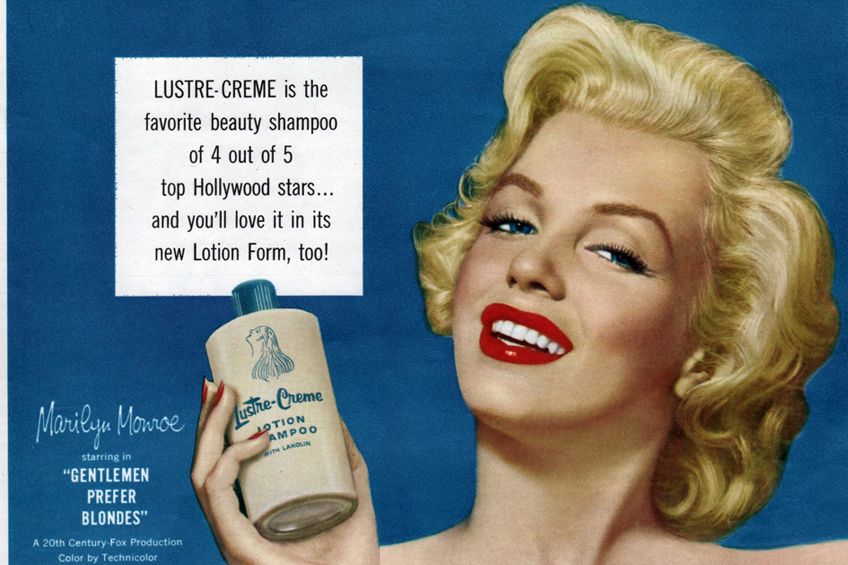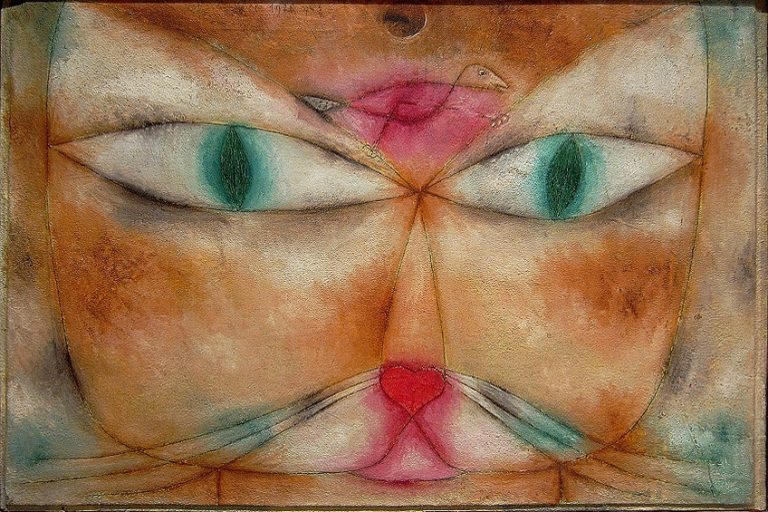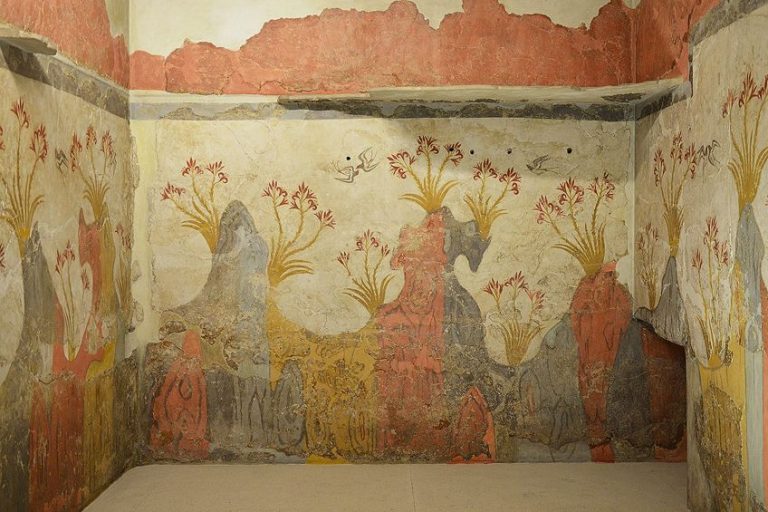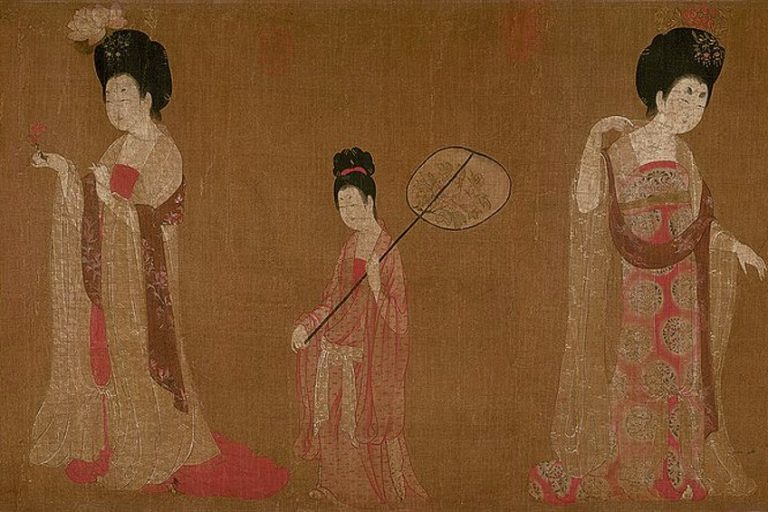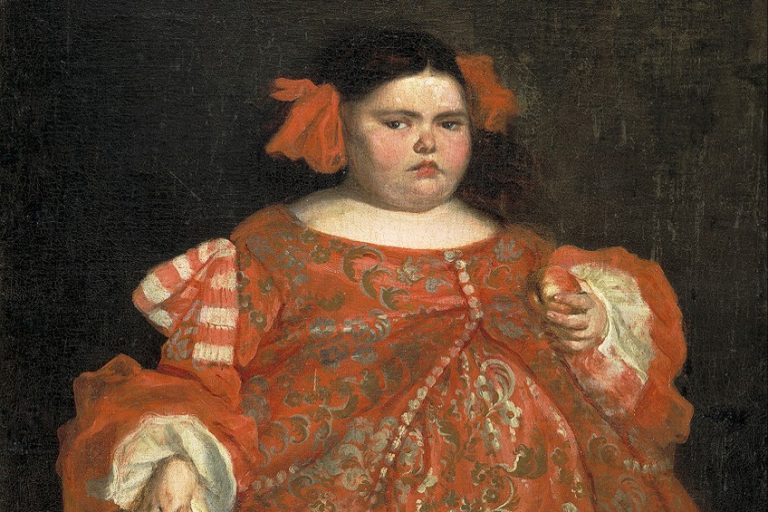“Marilyn Monroe” by Andy Warhol – Marilyn Monroe Print Analysis
The Marilyn Diptych (1962) is one of several silkscreen paintings of Marilyn Monroe by Andy Warhol. The Pop artist produced a series of these Marilyn Monroe prints shortly after the actress passed away. The Marilyn Monroe Pop art silk screens were the first artworks that Warhol produced with this technique, leading to a successful series of works using the silkscreen method.
The Marilyn Monroe painting by Andy Warhol
In 1962, shortly after the passing of Marilyn Monroe, Andy Warhol used a photograph of the star to create a silkscreen painting comprising 50 images known as the Marilyn Diptych. A few years later he produced a series of silkscreens of the same photo that was used in the diptych, except enlarged, with each rendition being rendered in different colors. One of the Marilyn Monroe prints called Shot Sage Blue Marilyn (1964) has recently become the most expensive artwork ever sold at auction that was produced in the 20th century.

An Introduction to Andy Warhol
| Nationality | American |
| Date of Birth | 6 August 1928 |
| Date of Death | 22 February 1987 |
| Place of Birth | Pittsburgh, Pennsylvania, USA |
Andy Warhol was obsessed with fame, commercial society, and mechanical replication, and was responsible for creating some of the previous century’s most memorable imagery. In his most renowned artworks, he borrowed heavily from mainstream culture and commonplace subject matter, such as Brillo Box sculptures, Campbell’s soup cans, and portraits of Elizabeth Taylor and Marilyn Monroe. Warhol utilized silk-screen printing to produce his signature flat fields of color and hard edges, eschewing the prevailing painting and sculpture forms of his day.
The artist trained Jean-Michel Basquiat and Keith Haring and continues to inspire contemporary art throughout the world: Takashi Murakami, Richard Prince, and Jeff Koons are among his daring successors.
Andy Warhol fell in love with Pop art in 1960. It’s nearly impossible to imagine that the style even existed before Warhol: it originated in the mid-1950s in Britain. And it’s strange to imagine that he was an artist before he started producing Pop art, that’s how closely tied the artist and the style are perceived by the majority of people. In truth, Warhol was a very prolific commercial illustrator for brands such as Vogue, Tiffany & Co., and Glamour magazine throughout the 1950s.
Marilyn Diptych (1962)
| Artist | Andy Warhol (1928 – 1987) |
| Date of Completion | 1962 |
| Medium | Acrylic paint on canvas |
| Current Location | Tate Museum, London, England |
In 1962, Warhol grew enamored with silk screen printing. This approach would become his most defining style: it was easy, and fast, and allowed him to make little changes to the same image repeatedly. “The rubber-stamp approach I’d been using to replicate pictures suddenly looked too amateurish; I needed something bolder, more assembly-line-like”, Warhol remarked. The image chosen by Warhol was a publicity photograph from the 1953 film Niagara (1953), in which Marilyn had formerly featured.
Using this photograph, he made a number of Marilyn Monroe Pop artworks, such as Marilyn Diptych, which is now regarded as among the world’s most significant examples of Modern art. Rather than sketching or painting her visage, Warhol picked an existing photograph that he knew virtually everyone would recognize. Marilyn Monroe represents stardom and the idea of becoming a “sex symbol”. Incorporating famous individuals in pop art became a distinguishing feature of the style during the 1960s, serving as a satirical reflection on the media’s infatuation with celebrity worship.
Warhol is also claimed to be referring to a culture in which people might be perceived as products instead of people through this type of artwork. Additionally, the silkscreen process utilized by Warhol for Monroe’s pictures flattens the photograph even further. He accentuates an emotional flatness and discreetly portrays the superficial aspect of this woman by eliminating hues and employing bright colors. A societal sex symbol; a lady who is all society wants her to be. By emphasizing her distinctive features, Warhol tells us that there is a genuine person behind the image.
Many views exist among art historians and experts on the meaning contained in the Monroe images, the reasons the artist employed specific colors and compositions, and the statement he apparently attempted to convey to society.
Andy Warhol, on the other hand, professed to be quite transparent. “If you would like to understand all there is to learn about Andy Warhol, simply look at my films, artworks, and myself, and you’ll see me. There’s nothing to it”, he once said. Warhol strove to conceal any hint of feeling or creative aim, yet it is apparent that he put a lot of effort into his creations, including the Marilyn Monroe prints. It is believed that the relationship between the left and right sides of the painting represents Marilyn Monroe’s life and death.
Marilyn Monroe Pop Artworks and Appropriation
Warhol is recognized as an artist notorious for visual appropriation, and he frequently used press shots and publicly accessible photographs and designs that he did not own, which frequently led to a confrontation with the proprietors of the original material. The prints of Marilyn Monroe painting by Andy Warhol are an example and culminated in a settlement with the proprietor of the promotional photo that he utilized as the source material for the Marilyn Monroe prints. The artist has settled several copyright challenges, including those involving his iconic Jackie Kennedy pictures.

Although he did not have permission to use the commercial photograph and did not own the image he used, the final product was transformational enough that a compelling fair use claim might be made today, yet his appropriation is obvious. Furthermore, Warhol utilized the Campbell’s Soup label design for many silkscreen print paintings without authorization from the corporation. Campbell’s Soup subsequently unofficially accepted his usage due to the free publicity they obtained, but Warhol’s use of their design without first obtaining authorization was still appropriation.
Marilyn Monroe as Subject Matter
Even though Monroe passed away when she was 36 years of age, the Marilyn Monroe painting by Andy Warhol captures her when she was 26, the year in which she emerged as one of Hollywood’s most recognizable names. Warhol transforms Monroe from a regular person into a commodity that can be made and consumed by repeatedly reproducing her picture in his work, much like a Campbell soup can. The longer one looks at the exact image, the more the meaning and significance melts away, and the emptier you feel”, the Pop artist famously stated.
Warhol’s obsessions with stardom, beauty, and mortality are all reflected in his Marilyn Monroe Pop artworks.
He went on to produce his Death and Disasters canvases a year later, which featured horrible imagery of racial rioting, electric chairs, suicides, and car accidents. Warhol began his Reversal series in 1979, over 20 years after the original Marilyn Monroe prints in which he reversed his best-known works, turning bright parts darker and shadows into color. Over the course of seven years, Warhol developed a new series of Marilyn Monroe Pop artworks, essentially producing copies of his own copies.
The Sale of the Shot Sage Blue Marilyn Monroe painting by Andy Warhol
After selling for $195 million in less than four minutes at auction in New York, Andy Warhol’s 1964 silk-screen Marilyn Monroe print, Shot Sage Blue Marilyn, became the most valuable work of 20th-century art ever auctioned. It is also the costliest painting ever sold at auction by an American painter. In 2017, a skull artwork by Jean-Michel Basquiat, Warhol’s friend, collaborator, and artistic adversary, sold for $110 million. According to sources, the purchaser was an art dealer and gallery owner from the United States named Larry Gagosian. “Shot Sage Blue Marilyn is the ultimate apex of American Pop art, it surpasses portraiture, beyond 20th-century culture,” remarked Christie’s chairman Alex Rotter.

Andy Warhol was constantly associated with the concept of celebrity during his lifetime. Long before rumor blogs existed, Andy Warhol recognized the pull of global fame and its consequences on contemporary culture. More specifically, he was obsessed with starlets and prominent females of the day, whom he frequently immortalized in his now iconic pieces, such as the Marylin Monroe Pop art paintings. Although Warhol’s initial works focused on postwar America’s obsession with consumption, his most valuable works highlighted female celebrities. By painting over the defining characteristics of iconic faces with his unique screen-printing techniques, he was responsible for making these icons even more prominent after their deaths.
Frequently Asked Questions
What Is the Most Valuable 20th-Century Artwork?
The most expensive piece of 20th-century art ever sold at auction is the 1964 silk screen print Shot Sage Blue Marilyn Monroe painting by Andy Warhol. It was bought in 2022 by an American gallery curator and art dealer called Larry Gagosian for $195 million! This beat the previous record set by one of Jean-Michel Basquiat’s paintings, which was auctioned for $110 million in 2017.
Why Did Andy Warhol Produce Marilyn Monroe Prints?
The artist was known to be obsessed with the idea of celebrity worship. His aim was to portray famous people in a manner similar to consumer products. By doing so, he hoped to show how status turned celebrities into commodities.
Alicia du Plessis is a multidisciplinary writer. She completed her Bachelor of Arts degree, majoring in Art History and Classical Civilization, as well as two Honors, namely, in Art History and Education and Development, at the University of KwaZulu-Natal, South Africa. For her main Honors project in Art History, she explored perceptions of the San Bushmen’s identity and the concept of the “Other”. She has also looked at the use of photography in art and how it has been used to portray people’s lives.
Alicia’s other areas of interest in Art History include the process of writing about Art History and how to analyze paintings. Some of her favorite art movements include Impressionism and German Expressionism. She is yet to complete her Masters in Art History (she would like to do this abroad in Europe) having given it some time to first develop more professional experience with the interest to one day lecture it too.
Alicia has been working for artincontext.com since 2021 as an author and art history expert. She has specialized in painting analysis and is covering most of our painting analysis.
Learn more about Alicia du Plessis and the Art in Context Team.
Cite this Article
Alicia, du Plessis, ““Marilyn Monroe” by Andy Warhol – Marilyn Monroe Print Analysis.” Art in Context. January 31, 2023. URL: https://artincontext.org/marilyn-monroe-by-andy-warhol/
du Plessis, A. (2023, 31 January). “Marilyn Monroe” by Andy Warhol – Marilyn Monroe Print Analysis. Art in Context. https://artincontext.org/marilyn-monroe-by-andy-warhol/
du Plessis, Alicia. ““Marilyn Monroe” by Andy Warhol – Marilyn Monroe Print Analysis.” Art in Context, January 31, 2023. https://artincontext.org/marilyn-monroe-by-andy-warhol/.


